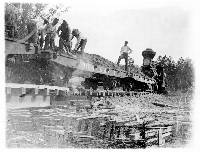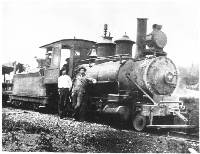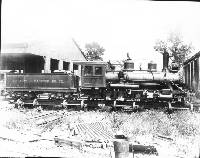Mount Airy & Eastern Railway (19.25 miles)
The Mount Airy and Eastern Railway was a narrow gauge lumber hauling line from Mount Airy, NC to Kibler, VA. The railroad was chartered by T.E. Houston and associates on May 3, 1899 and the Mount Airy Construction and Manufacturing Corporation was chartered on May 31, 1899. Both were chartered under the laws of North Carolina. The two companies were operated as one with the same officers and books with headquarters in Mount Airy, NC. The road was opened to Goins, VA (15.75 miles) on February 1, 1900. The enterprise was unsuccessful and C. B. Keesee of Martinsville, VA was appointed receiver on May 4, 1901. Under Keesee the line was extended to Kibler, VA by November 1, 1902 to serve a lumber mill of Kibler & Kay. An extension to Stuart, VA (10 miles) was surveyed in 1904 but never built. The road was sold under foreclosure on November 15, 1910 and purchased for $20,000 by the Rosslyn Lumber Company, Inc. of Rosslyn, VA. Sale confirmed December 13, 1910. It was sold again on April 1, 1915 to Sidney Bieber of Washington, DC, who reorganized it without changing the name. Biebe and some New York Associates had bought 12,000 acres of hardwood timber lands in southwest Virginia and planned to use the MA&E to deliver the lumber. The Mayo-Dan Lumber Company with principle offices in Washington, DC was organized to handle this enterprise. The later history of the line is obscure, but the railroad stopped operations in the Spring of 1918 or thereabouts. It was sold and reorganized as the Virginia & Mount Airy Railway on February 6, 1920 but there is no evidence that it was restored to operation. It was apparently liquidated in 1930.
The MA&E "connected" with the A&Y on the Flat Rock branch near the granite quarry. The narrow gauge tracks were parallel to the standard gauge tracks and freight was transferred from car to car. According to Gareth McDonald, there was no evidence of moving cars from narrow gauge to standard gauge trucks by lifting, as was done elsewhere with different gauge interchanges.
Here are four images of MA&E equipment that I have located so far (click on small image to view larger image):



